"Vendobiontans": Ediacaran Mystery Animals
|
Charniodiscus arboreus (fossil cast), Phylum Rangeomorpha†, is a strange frond-like organism with a quilted pattern on its surface. It is not even clear if it was an animal, but we know it didn't photosynthesize because it lived in water too deep for much light to penetrate. It probably absorbed dissolved nutrients directly from the water.
Ediacaran Period, 565-555 Ma
New Mexico Museum of Natural History & Science, Albuquerque
|
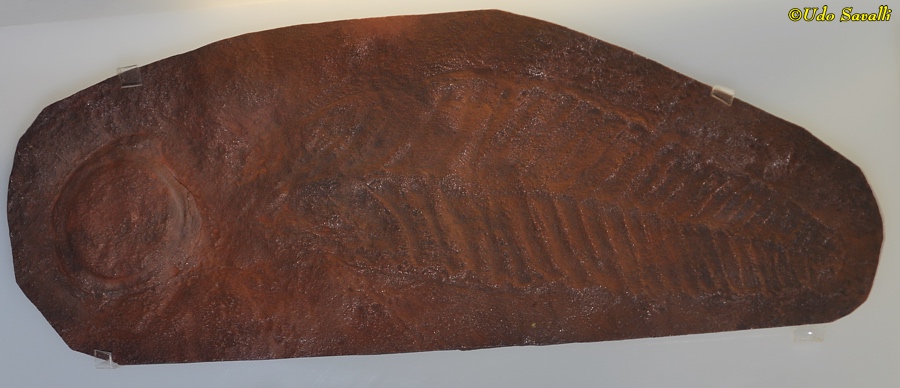
|
|
|
Chondroplon bilobatum (fossil cast) is an animal of unknown relationship, possibly belonging to the Cnidaria or an extinct group.
Ediacaran Period, 555 Ma
New Mexico Museum of Natural History & Science, Albuquerque
|
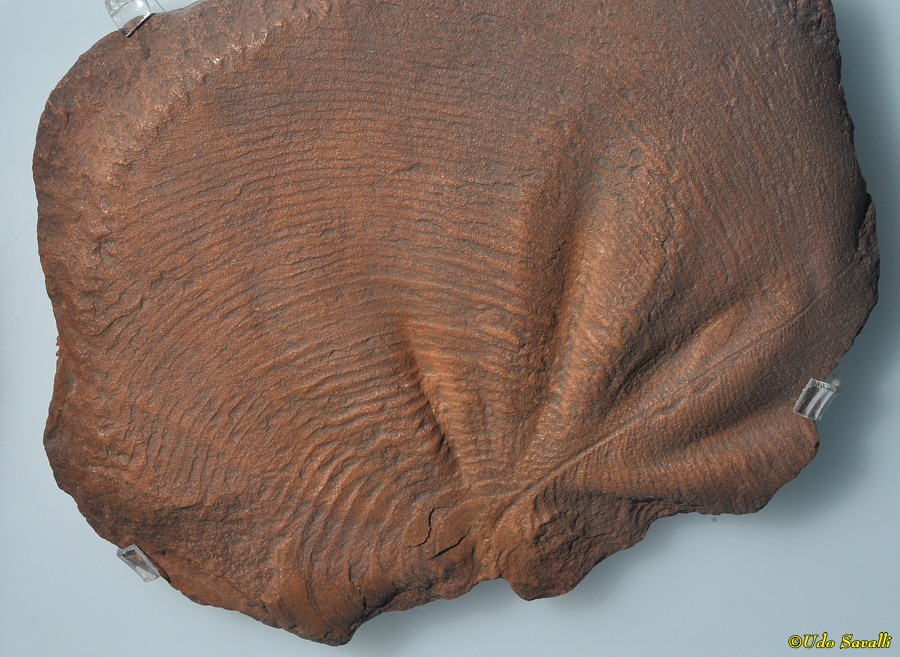
|
|
|
Dickinsonia costata, was a flat, bilaterally symmetric (can be evenly divided into right and left halves) animal with a series of segments. Although they may resemble flat-bodied segmented worms, their segments on each side are off-set from the other side, unlike all modern worms. Trace chemical analysis indicates they were animals.
Phylum Proarticulata†
Ediacara Hills, Australia
Ediacaran Period, 567-550 Ma
Chicago Field Museum
|
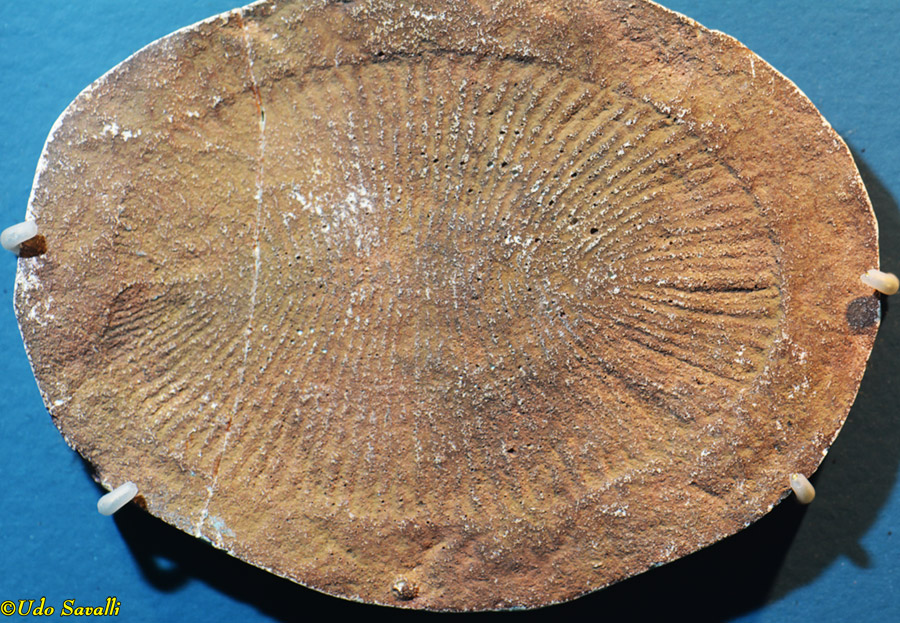
|
|
|
Dickinsonia costata (cast)
Phylum Proarticulata†
Ediacaran Period
Denver Museum of Science & Nature
|
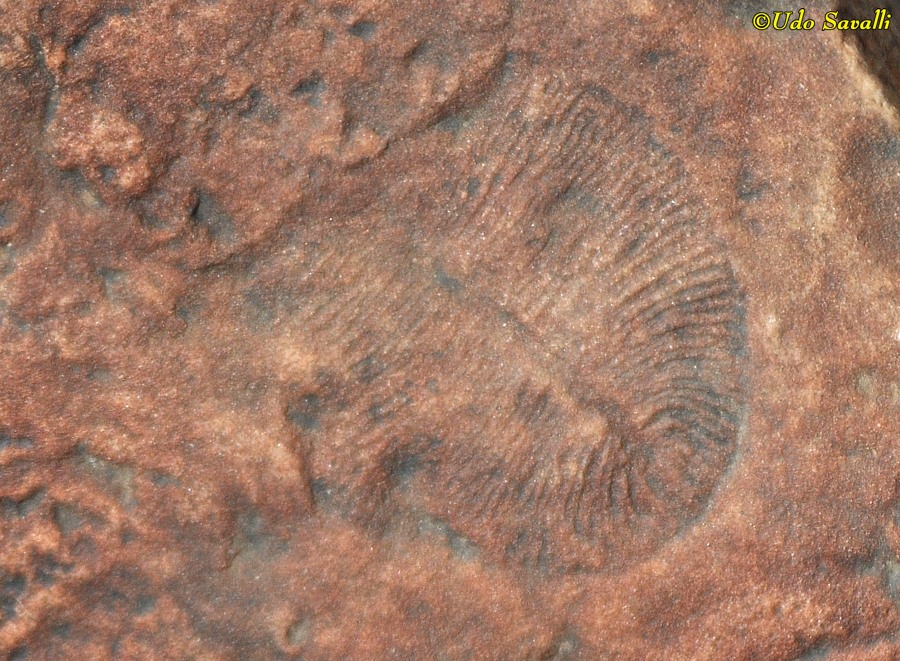
|
|
|
Ediacaran Diorama, featuring Charniodiscus arboreus, Mawsonites spriggi, Ediacaria flindersi, Kimberella quadrata, & Dickinsonia costata
Ediacaran Period
Denver Museum of Science & Nature
|
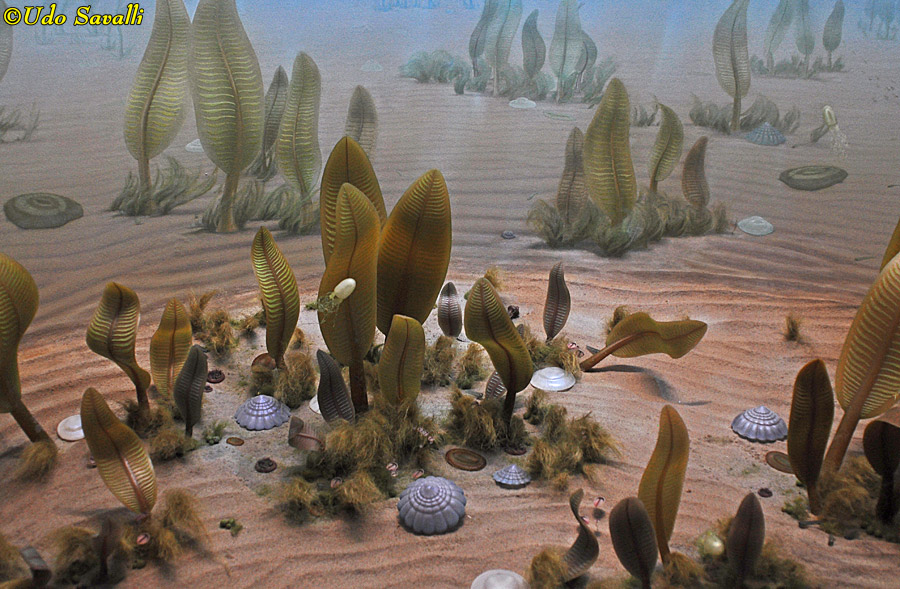
|
|
|
Ediacaran Sea Floor Diorama, featuring Charnia, Spriggina, Tribrachidium, & Dickinsonia
Ediacaran Period, 600 Ma
Chicago Field Museum
|

|
|
Phylum Porifera — The Sponges
|
Sponges, such as this Diagoniella sp., are the simplest animals, lacking true tissues or organs. They feed by drawing water through their body and filtering out bacteria, algae, and other tiny bits of food.
Taxonomy: Phylum Porifera; Class Hexactinellida
Utah
Middle Cambrian, Wheeler Shale, 507 Ma
Museum of Ancient Life, Utah
|
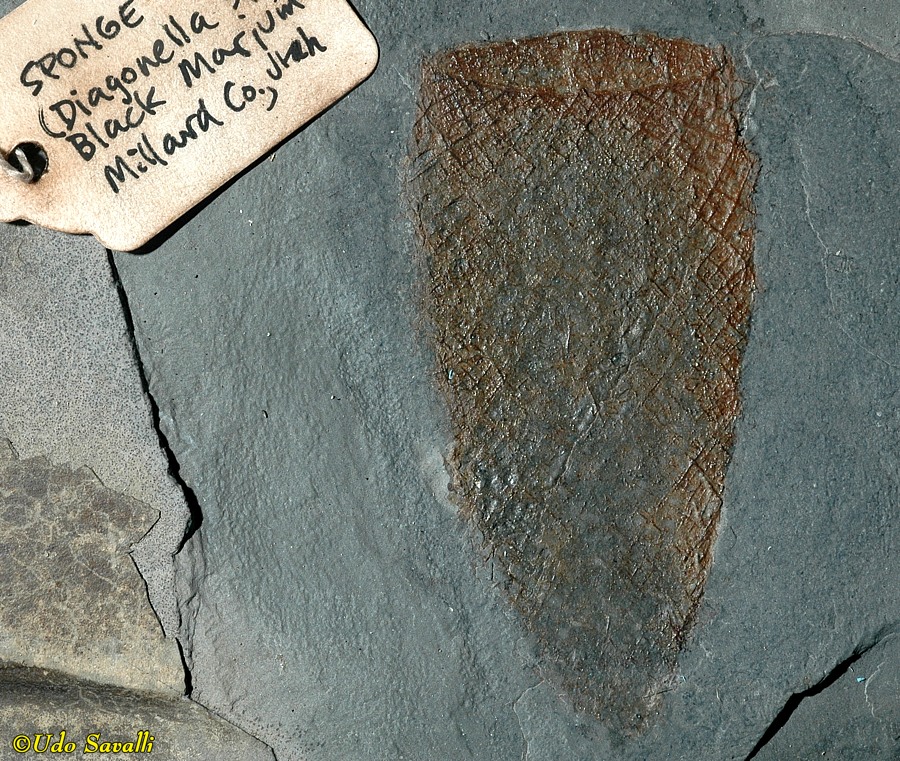
|
|
|
There is some debate as to whether these Chancellaria sp. are actually true sponges or evolved independently.
Utah
Middle Cambrian, Wheeler Shale, 507 Ma
Museum of Ancient Life, Utah
|
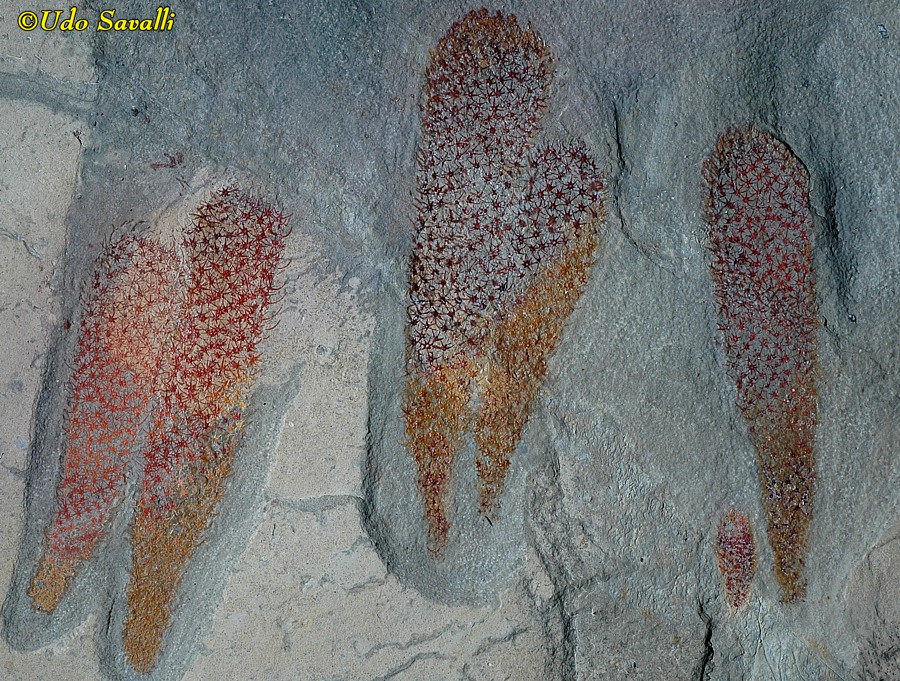
|
|
|
Choia sp., a sponge in the Class Desmospongiae.
Utah
Middle Cambrian, Wheeler Shale, 507 Ma
Museum of Ancient Life, Utah
|
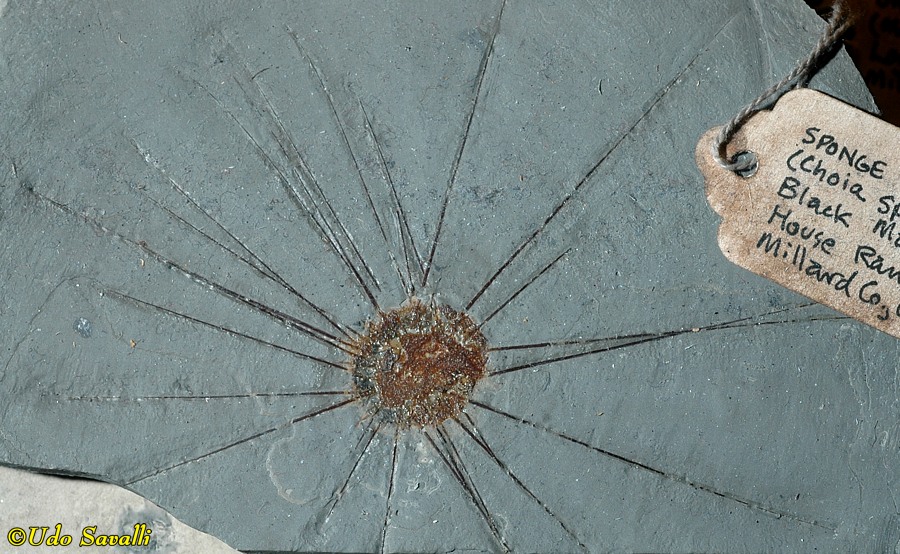
|
|
|
Brachiospongia sp., sponge.
Taxonomy: Phylum Porifera; Class Hexactinellida
Bridgeport, KY
Ordovician Period
Chicago Field Museum
|
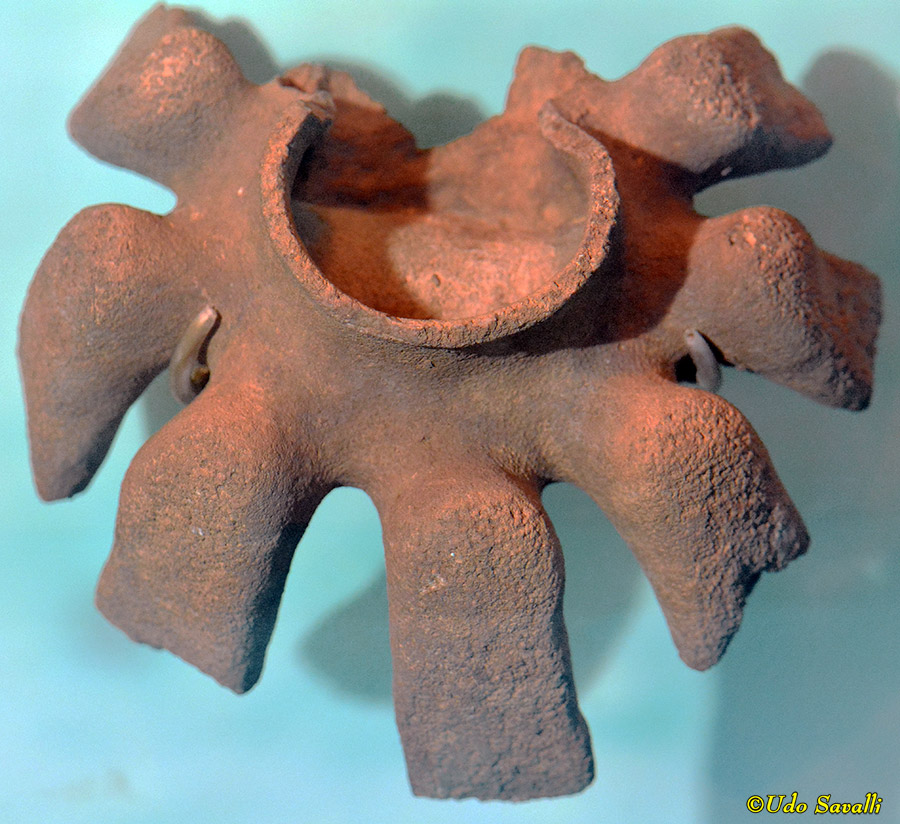
|
|
|
Brooksella alternata sponges.
Taxonomy: Phylum Porifera; Class Hexactinellida
Coosa Valley, Alabama
Cambrian Period
Chicago Field Museum
|
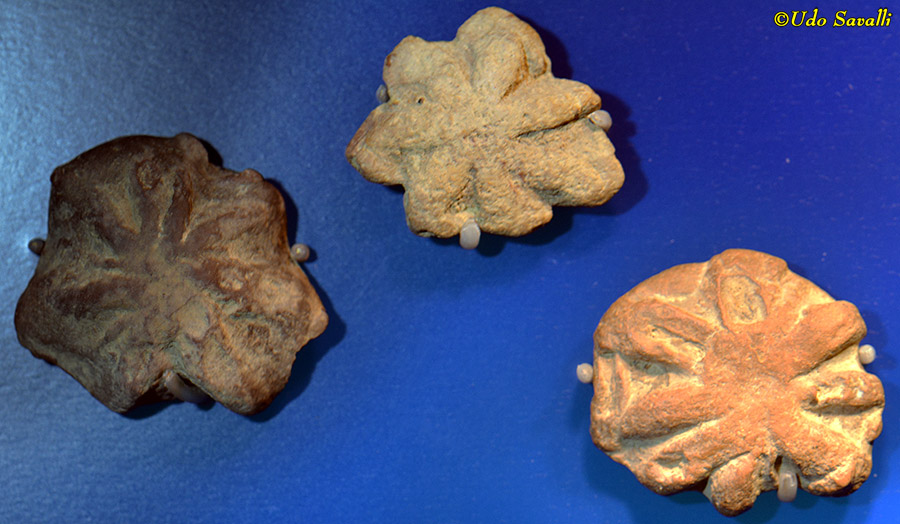
|
|
Phylum Cnidaria — Jellyfish, Corals, & Anemones
|
These disk-like Medusinites asteroides fossils from the Ediacaran are thought to be jelly-fish like animals, but this view is debated.
Ediacaran Period, 610-550 Ma
New Mexico Museum of Natural History & Science, Albuquerque
|
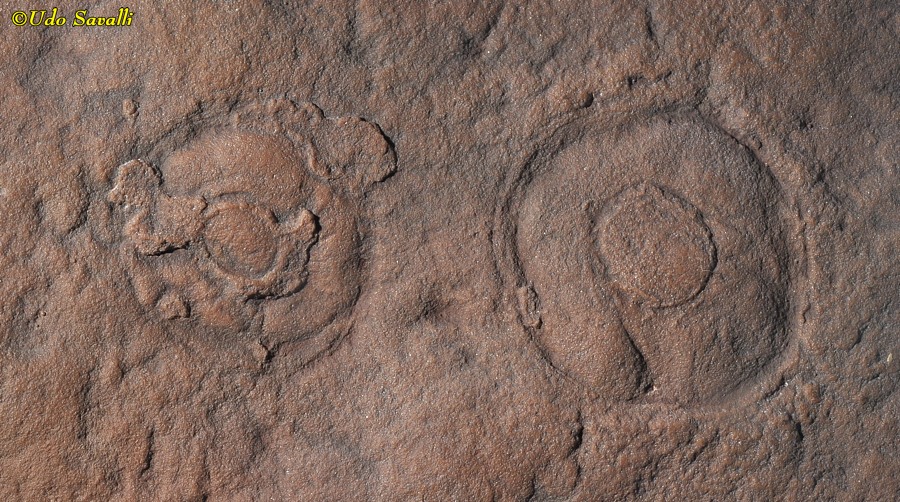
|
|
|
Horn Corals and a Tabulate Coral (center). Corals are simple animals that secrete a calcium carbonate skeleton around them. These skeletons can form complex reefs that become habitat for many other kinds of animals. These corals are from a different group than modern corals (which evolved only after these went extinct).
near Tonto Village, AZ
Middle Devonian Period, Martin Formation, 380 Ma
personal collection
|
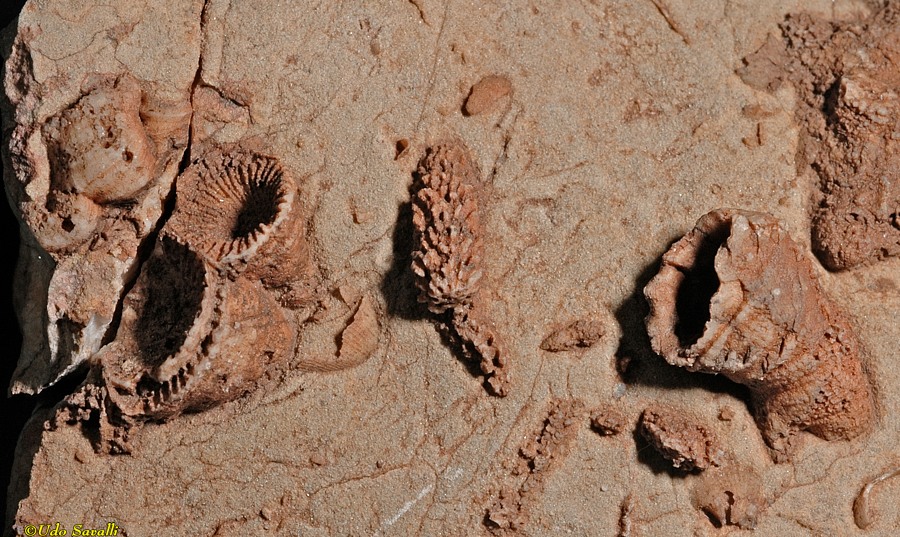
|
|
|
Sun Coral, Pachyphyllum nevadens, a colonial coral.
near Tonto Village, AZ
Middle Devonian Period, Martin Formation, 380 Ma
personal collection
|

|
|
|
Hexagonaria sp. is a colonial coral similar to Pachyphyllum, above, but this specimen has been polished to show its internal structure.
Assa Zag, Western Sahara, Morocco
Devonian Period, 350 Ma
personal collection
|
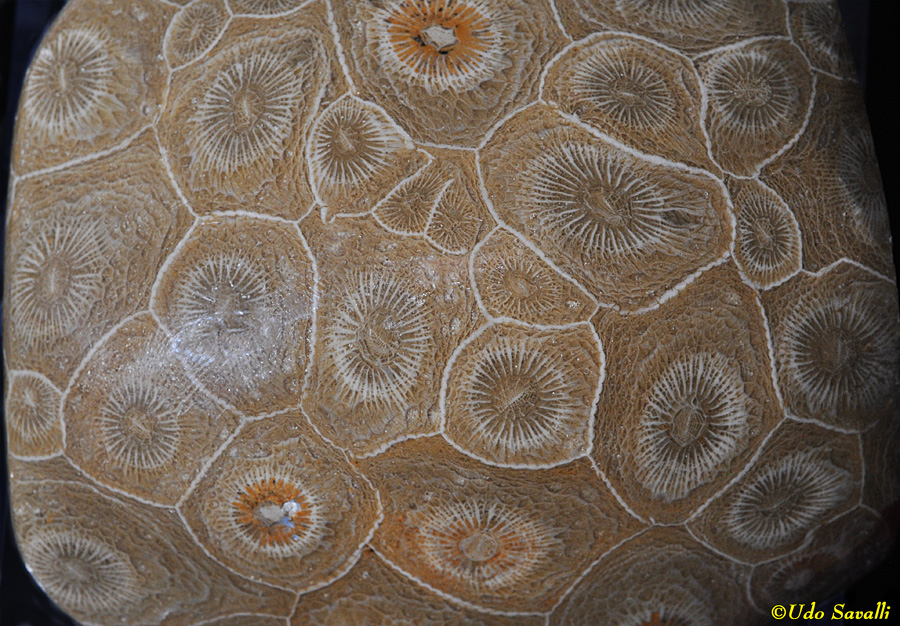
|
|
|
Horn corals, probably Zaphrenthis sp.
Falls of the Ohio State Park, Indiana
Devonian Period, 387 Ma
In situ
|

|
|
|
Eridophyllum sp. coral colony
Falls of the Ohio State Park, Indiana
Devonian Period, 387 Ma
In situ
|
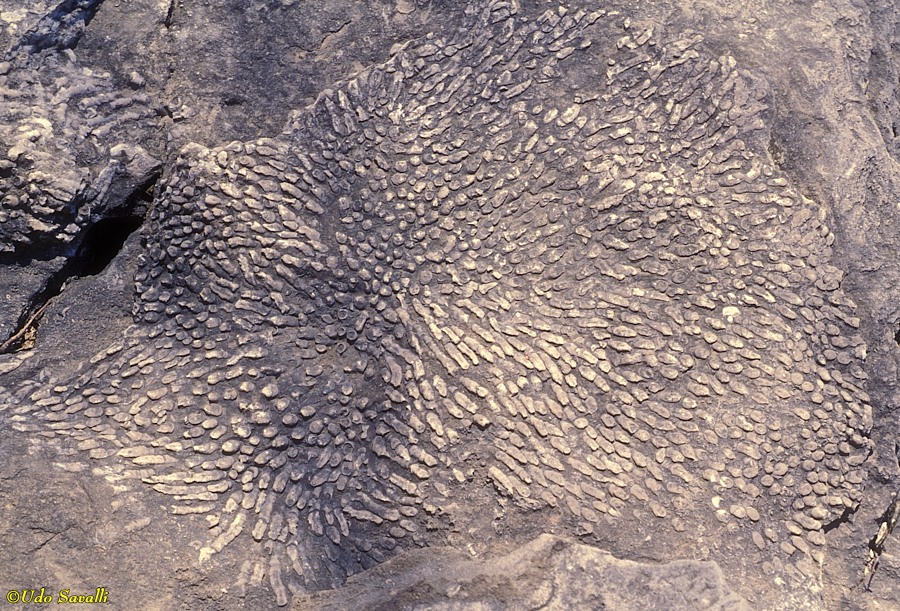
|
|
Phylum Bryozoa — Moss Animals
|
Bryozoans are tiny animals that secrete a calcite case in which they live. They nearly always form colonies of many individuals that can resemble some coral colonies. Colonies can form flat crusts over rocks or shells, or have branching or grid-like structures.
Two species are shown here, the branching Pseudohornera bifida and Pachydictya kuckersensis, which has larger pores through which the individual animals would extend their tentacles (each opening is thus one individual in the colony).
Narva, Estonia
Late Ordovician Period, Viivikonna Formation
personal collection
|
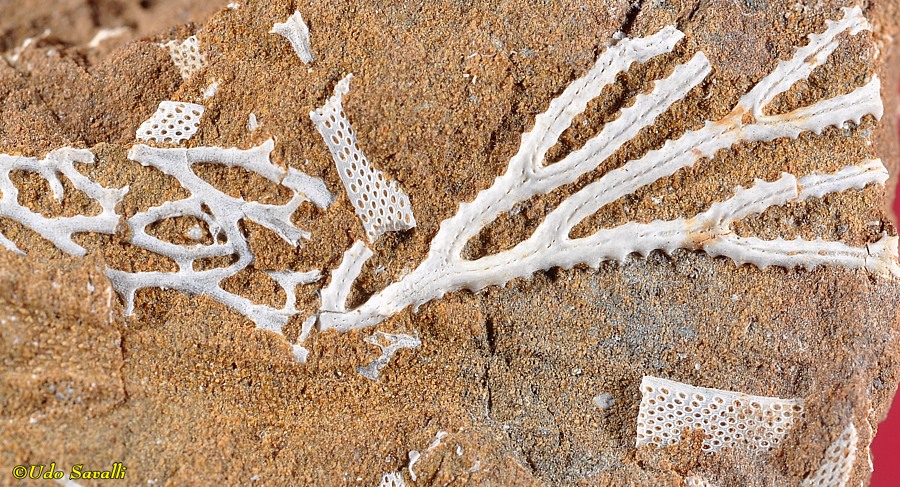
|
|
|
An unidentified branching bryozoan. Each tiny pore represents the opening to one individual "house".
Taylor Mill, KY
Ordovician Period
personal collection
|
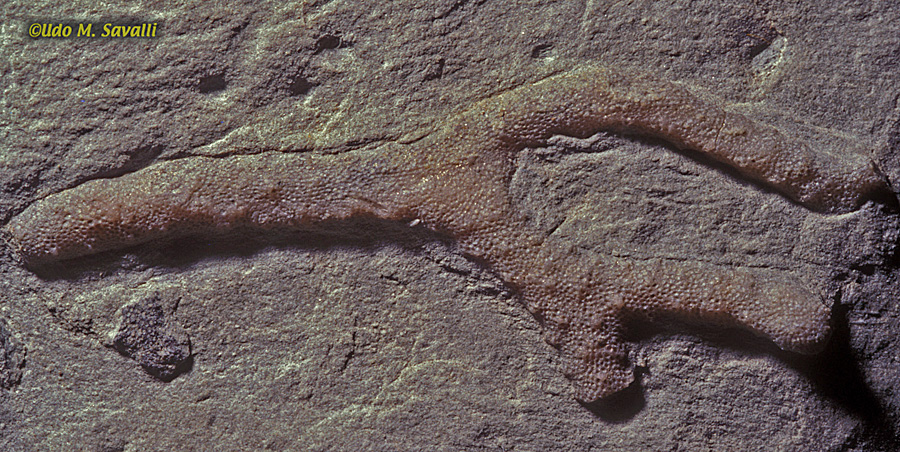
|
|
|
These bryozoan colonies, most likely Fenestella sp., form a grid-like branching pattern.
Kohl's Ranch, AZ
Carboniferous Period, Pennsylvanian Epoch, Desmoinesian Stage, Naco Formation, 310 Ma
personal collection
|
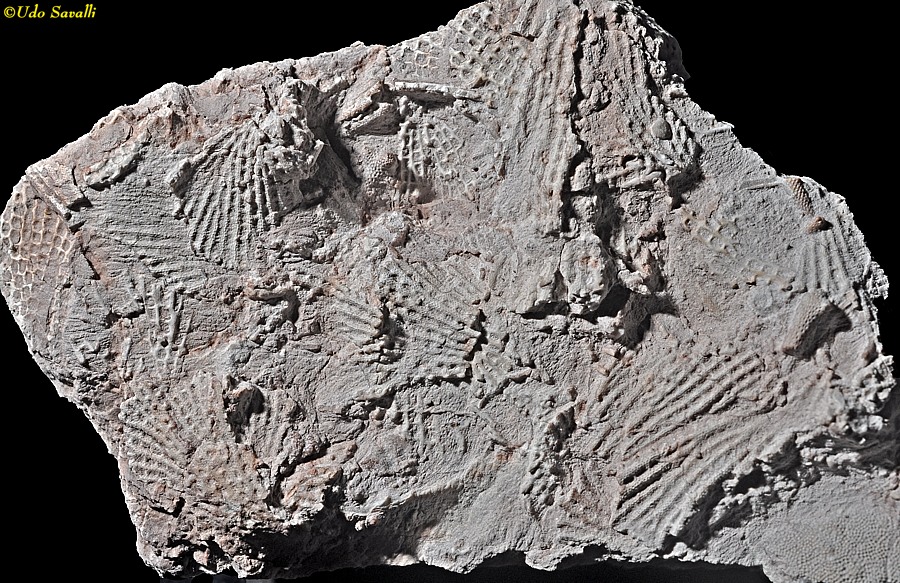
|
|
|
A colony of the branching bryozoan, Hallopora multitabulata
Fankfort, IL
Ordovician Period
Chicago Field Museum
|

|
|
Brachiopoda — Lamp Shells
|
Brachiopods have two shells ("valves") so they superficially resemble bivalve mollusks such as clams and scallops. However, Brachiopod valves are top and bottom instead of left and right, and their internal anatomy is also quite different.
These brachiopods all were collected at a single locality reflecting a shallow marine environment. They are as follows: top row: Derbyia crassa (left & right); Anthracospirifer occiduus (middle); middle row: 2 Cleiothyridina orbicularis; bottom row: 2 Composita subtilita, Antiquatonia portlockiana.
Kohl's Ranch, AZ
Carboniferous Period, Pennsylvanian Epoch, Desmoinesian Stage, Naco Formation, 310 Ma
personal collection
|

|
|
|
Sowerbyella sp. brachiopods.
Kincaid Lake, KY
Ordovician Period
personal collection
|

|
|
|
Hyolithids, such as this Hyolithes cecrops, are extinct cousins of the brachiopods (but are technically a separate group). The curved structure at right (one of two) probably supported them above the sea bed.
Box Elder Co., UT
Middle Cambrian Period, 525 Ma
Denver Museum of Science & Nature
|
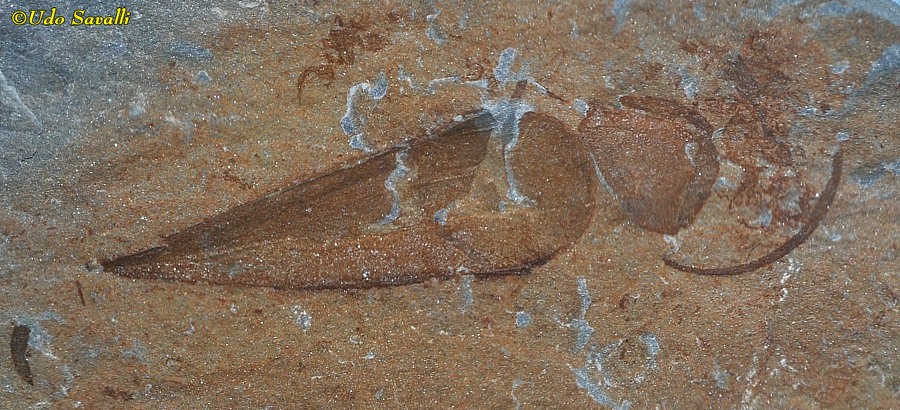
|
|
Annelida & Priapulida — Segmented & Other Worms
|
The annelids or segmented worms (the group that includes earthworms) are mostly soft-bodied, their fossilization requires special conditions
This Astreptoscolex anasillosus was preserved in a concretions that formed around the worm rapidly after death and transforming the worm into a layer of white mineral.
Taxonomy: Phylum Annelida, Class Polychaeta, Order Phyllodocida
Mazon Creek, Grundy Co., IL
Carboniferous Period, Middle Pennsylvanian Epoch, Francis Creek Shale, Carbondale Formation
personal collection
|
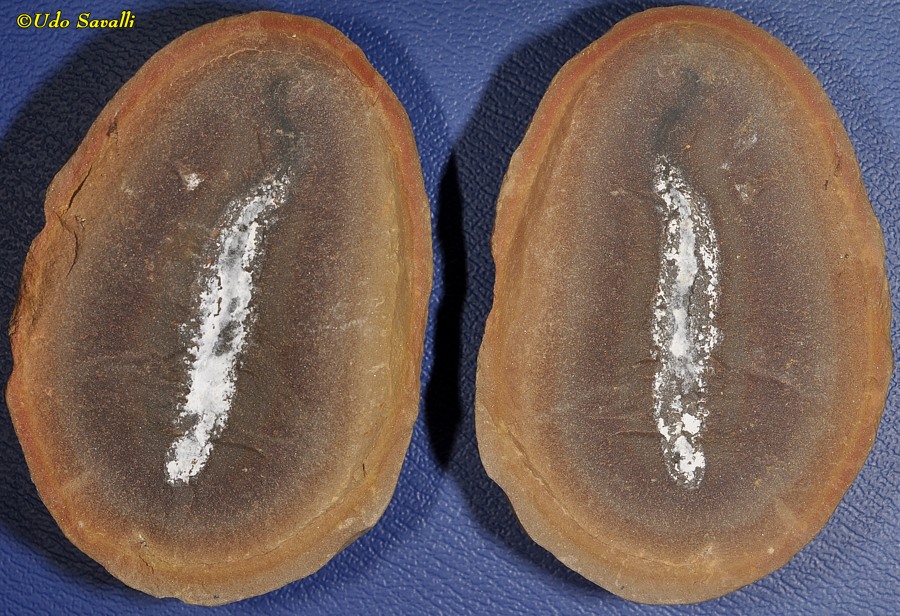
|
|
|
This Fossundecima konecniorum worm has swimming appendages and spines
Mazon Creek, Grundy Co., IL
Carboniferous Period, Middle Pennsylvanian Epoch, Francis Creek Shale, Carbondale Formation
personal collection
|
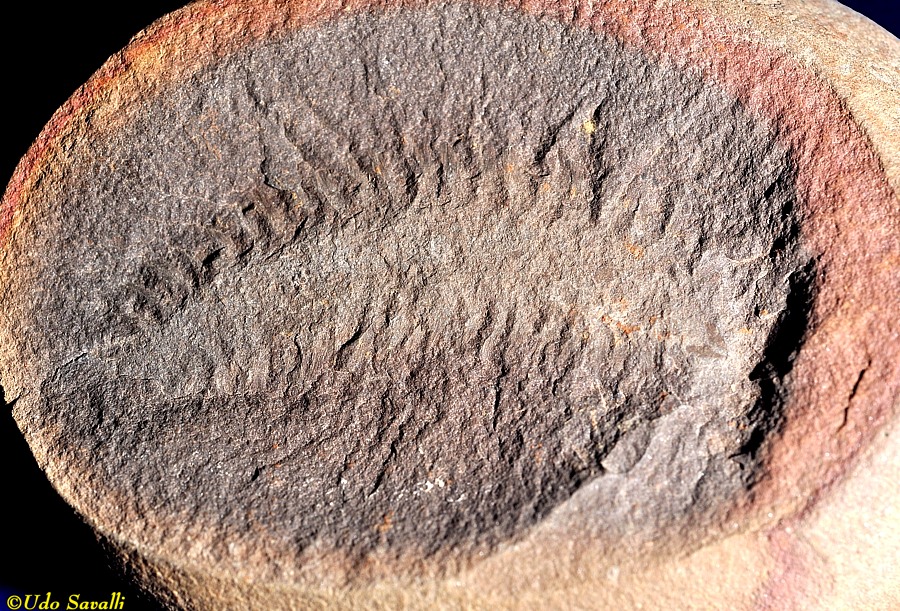
|
|
|
This Lecthaylus gregarius belongs to a group of annelids known as the "peanut worms."
Taxonomy: Phylum Annelida, Class Sipuncula
Silurian Period, 420 Ma
Chicago Field Museum
|
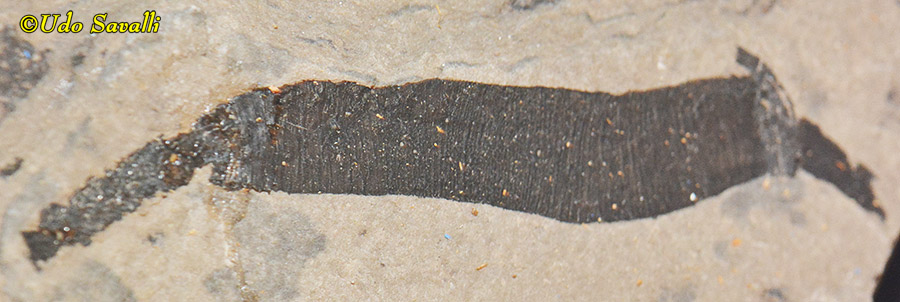
|
|
|
Priapulid worms date from the Cambrian Period to today, although they are scarce now with only 22 species. They are not closely related to the annelid worms, but instead more closely related to nematodes and arthropods
Fossil of Ottoia sp., a common Cambrian species.
Taxonomy: Clade Scalidophora, Phylum Priapulida, Class Archaeopriapulida†
Utah
Middle Cambrian, Wheeler Shale, 507 Ma
Museum of Ancient Life, Utah
|
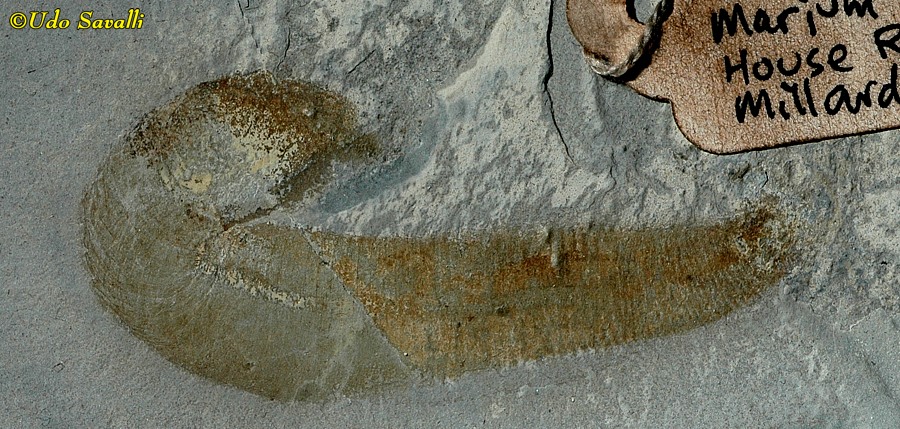
|
|
|
Fossil of Selkirkia columbia, a tube-dwelling priapulid worm
Taxonomy: Clade Scalidophora, Phylum Priapulida, Class Archaeopriapulida
Burgess Shale, British Columbia
Middle Cambrian, 508 Ma
Chicago Field Museum
|
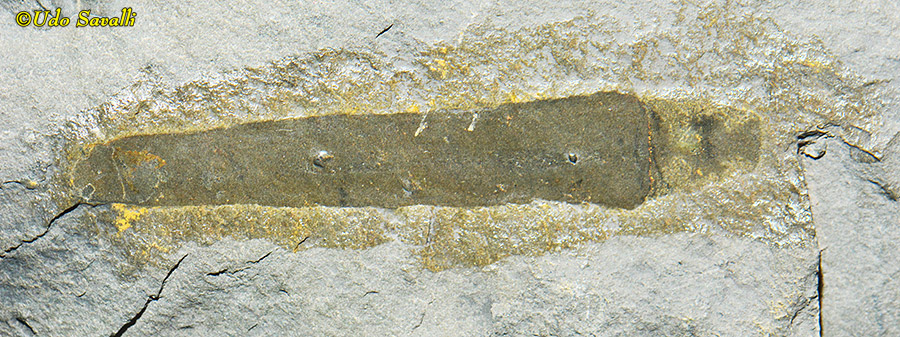
|
|
Hemichordata — Acorn Worms and Relatives
|
Graptolites are, like bryozoans, colonies of tiny animals. Their closest relatives are the echinoderms (sea stars and relatives).
In this Amphigraptus sp. , the saw-blade-like structures are colonies, and each tooth represents a single individual in that colony.
Taxonomy: Phylum Hemichordata, Class Graptolithina†
Murray Co., OK
Ordovician Period, Trentonian Stage, Viola Limestone
personal collection
|
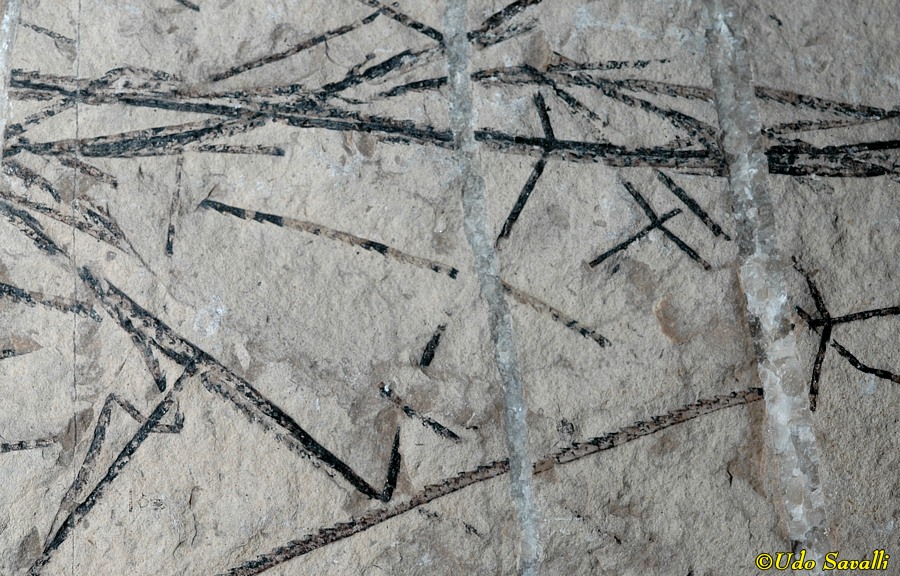
|
|
|
Eldonia ludwigi is a poorly understood soft-bodied animal with a curled (C-shaped) body. It is most likely an extinct member of the Ambulacraria, a group that includes both hemichordates and echinoderms.
Taxonomy: Clade Ambulacraria, Clade Cambroernida†
Burgess Shale, British Columbia
Middle Cambrian Period, 508 Ma
Chicago Field Museum
|
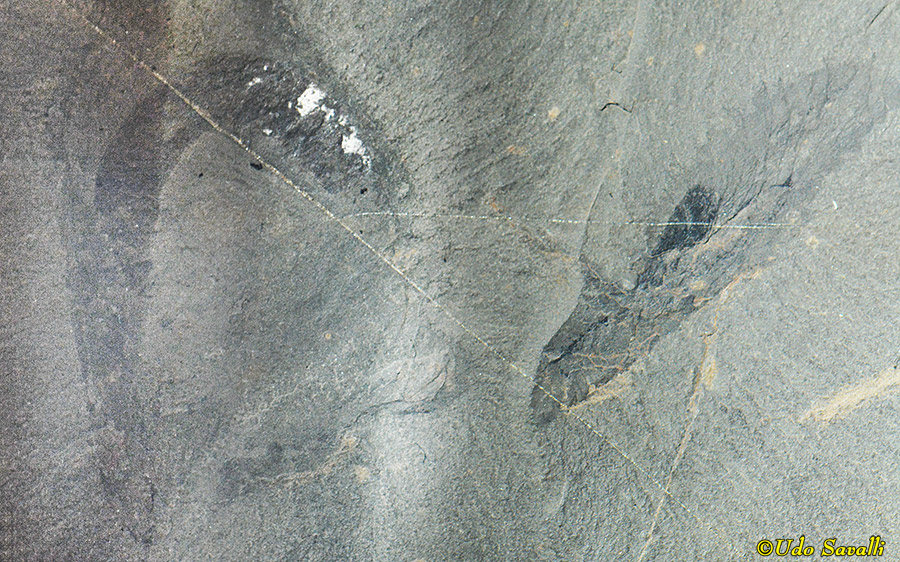
|
|
|






























